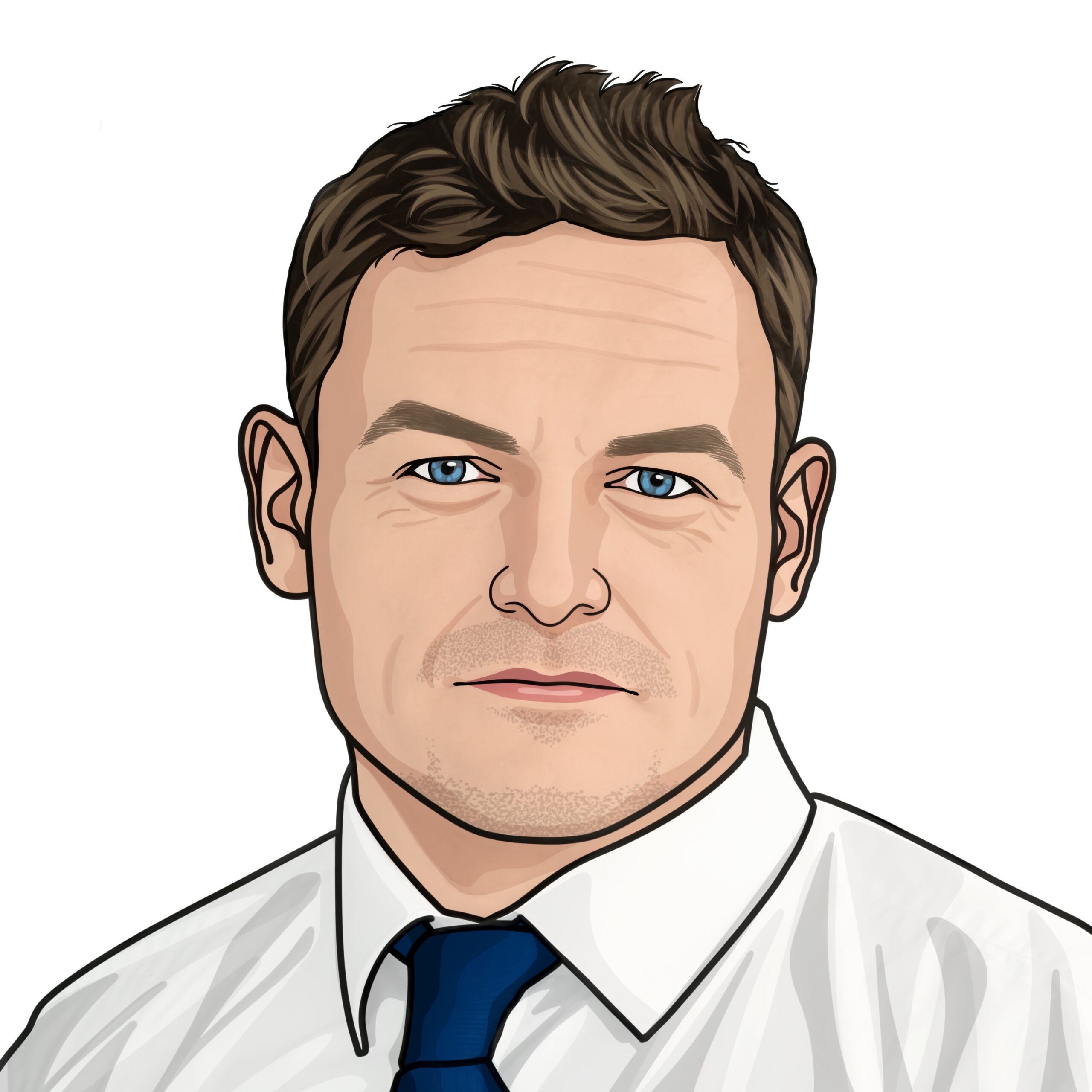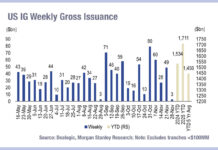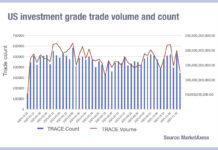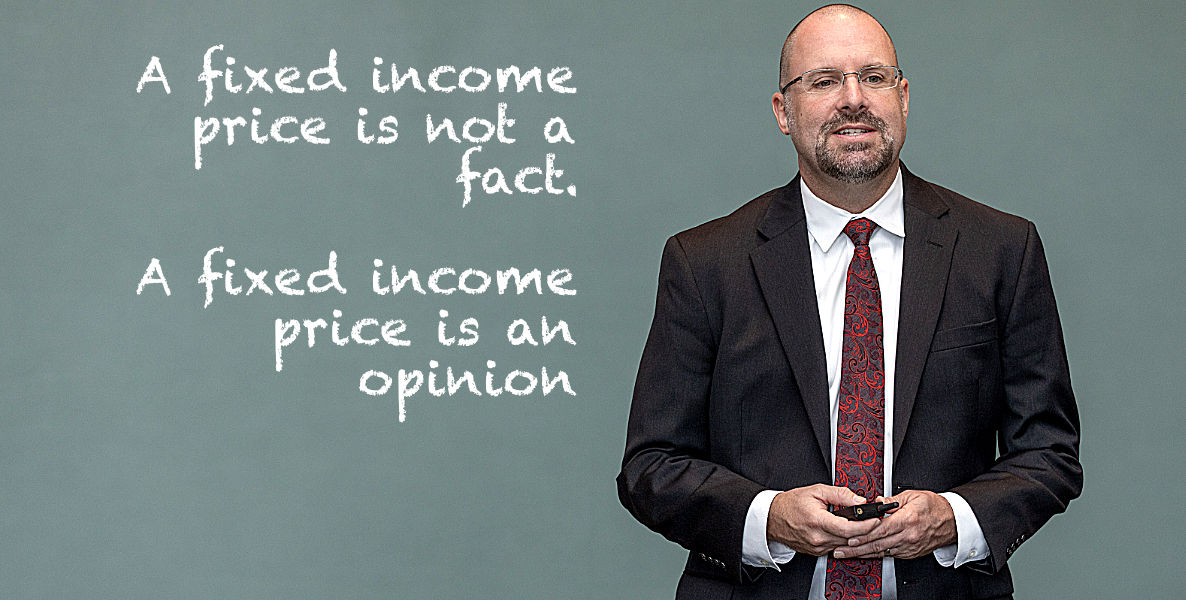 David LaRusso is the head of fixed income trading at Dimensional Fund Advisors, and has just celebrated his 25th anniversary at the firm. The business uses efficient market theory in a systematic approach to investment and trading, and The DESK spoke with David about how this shapes the firm’s view of best execution, trade flows and the resourcing of its trading team.
David LaRusso is the head of fixed income trading at Dimensional Fund Advisors, and has just celebrated his 25th anniversary at the firm. The business uses efficient market theory in a systematic approach to investment and trading, and The DESK spoke with David about how this shapes the firm’s view of best execution, trade flows and the resourcing of its trading team.
The DESK: What is the philosophy behind Dimensional Fund Advisor’s trading and investment process?
David LaRusso: Dimensional was founded in 1981 on the principle of putting the highest quality research to work in financial markets. We have a meticulous approach targeting known areas of higher expected return. A lot of this is based on research by Fama-French on efficient market theory. The process emphasizes that public markets do a great job of processing information, taking that in, and reflecting that in market levels. With that, we also put a high importance on broad diversification and low costs in delivering better long term outcomes for investors. From a trading aspect, to achieve broad diversification and low costs, we put an emphasis on designing all of our processes with flexibility.
TD: How does that work practically?
DLR: Trades have three different components; price, quantity, and time. Each shop has to figure out what is most important to it. If you’re an index fund and your biggest concern is tracking error, you want to make sure that you get those securities into your portfolio as quickly as possible, to minimize that deviation, putting an emphasis on needing to get a given quantity right now. To do that, it means you’re going to have to accept whatever price you can get.
If you’re an active investment firm and you have a trader or analyst that believes security is overvalued, you need you to sell this bond before the market corrects. That trader has a time and a quantity constraint. They’re going to have to accept whatever price they can get.
We want to flip that narrative. We always want to be flexible on quantity and time and put our emphasis on making sure we get the best price possible. If you’re getting the best price possible, even if it means not executing the trade at all, you’re lowering the costs associated with these transactions. If I put a trade out in competition, and I get a partial fill, and I can do that partial at a better level than I can do the full amount, great. I want the best price possible.
TD: Where choices do you have?
DLR: If I go out into the market and I can’t find a price that’s in line with where I think market levels should be, we have the substitutability in our process to look for bonds with similar characteristics; similar part of the curve, maturity, credit rating, and we view these instruments as substitutes for each other. If we have one bond we can buy as a substitute for another at better than its market value, I’d rather buy that than overpay, so I have the flexibility not to buy. Our one core philosophy in trading is flexibility in process. With that, we’re trying to avoid liquidity bottlenecks, we’re using that substitutability between securities to make sure that we are not overpaying for securities when we go to transact.
TD: What underpins that approach in terms of infrastructure and technology to support those strategies?
DLR: We’re huge consumers of data. We want to take in as much data as possible, so all of our processes are designed with the idea of being thorough and scalable in fixed income.
A fixed income price is not a fact. A fixed income price is an opinion. If you look at all the pricing services and broker quotes, all of the runs from the brokers and inventory, we want to aggregate as many of these opinions as possible and then use all of that data at our disposal to figure out what the market is telling us the level of that security should be.
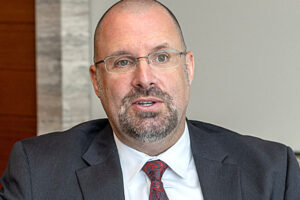
The collective opinions of analysts and traders shape the market as a whole, and markets find that equilibrium, which essentially will determine where the price is. We’re sorting through this information to figure that out. Some of the more important pieces of data, in addition to broker inventory runs, pricing data, is information like the TRACE database, because it records actual transactions that occurred. The key with TRACE is that while it records where a trade occurred, it’s not necessarily where a trade should have occurred. It’s a very important piece of information but it was one person’s opinion at that time that they were trading. You don’t know what their motivations were perhaps being an index fund, or an active shop, forced to trade at a level that wasn’t in line with market but they were comfortable because it worked in their valuation of where they needed to be. I want to take that as another data point that helps inform me on my decisions.
TD: How do you see best execution and best investment outcomes interplaying?
DLR: A lot of people look at best execution as best price. They go to the market, with research about who they should go to, and all that, got prices back, and if they executed at the best one, they achieved their best execution goal was.
That’s only looking at part of the picture. You really need to ask, is that price one that is reflective of where I should be executing the security? I can go to 100 brokers and get 100 prices that are not in line with the market. Whether you got best execution on that trade depends how you define best execution. I define it more broadly. Is that a level that I should be happy with, not just the best I’ve received? That’s important, and having the mechanisms to go through and analyse data afterwards to assess if this was a trade that was executed at a level that I should be happy with.
TD: The difference being you’ve already got to have confidence in your opinion before you go to market?
DLR: We never want is to be in a situation where we’re taking instructions from the brokers on what we want to do. If you are going to the person who has the incentive to get the trade done, and asking them to inform you about what decision you make, you’re not making sure that you’re getting the best price.
You need to look at data independently and based on everything you are seeing, decide where the market is, put that bond out in competition, going to the street, asking them where they would offer. There are two advantages to that approach. One, it gives you an additional affirmation from the market about what you were seeing beforehand. But also, if there’s any differences in what you think you should be seeing versus what you’re seeing, it can give you additional information that something has changed, maybe the liquidity of that security is different than you were expecting. Maybe it’s not something you want to get. There are trades that you’ll put out in competition and get a better trade or better level than you were thinking and that might be an indication of a red flag. So, I look at going to the brokers as an additional part of the price discovery process for me, where I’m learning more information from them about what the market is. Anyone can put a quote down, but when you actually ask them to offer or bid on that bond, then you really get to know what they think of that situation.
A lot of people get an order and think, “I’m going to execute this trade, unless I can find a reason not to.” My initial stance is that I’m not going to trade this unless I can find a reason to trade it. And I think when you approach it from that philosophy, you have a different mindset about what you’re looking for. It puts you in a more conservative mindset to using the flexibility you have at hand.
TD: How does this mindset optimize outcomes for the end investor?
DLR: By treating the costs as a very important part of the process, you lower the expected cost of the portfolio. If you’re lowering the expected cost while still delivering the investment objectives that portfolio managers are looking for overall, it’s going to lower the cost of that execution for the end client. That’s what it’s about. Making sure I’m able to get the securities into the portfolio that will help them achieve their expected return goals, at the lowest cost I can.
TD: What are the precursors to make systematic trading effective in any asset class from the point of view of market structure and information?
DLR: Market transparency and fast dissemination of data are the two most important things for any functional market. Those two dynamics of information allow you to do meticulous pre-trade and post-trade analysis of transactions. If you don’t have that data, you can’t really analyse where pricing or markets should be, and then at that point, you’d just be guessing. In any market, I’m striving for as much transparency as possible. We’re huge advocates for things like TRACE in the US, TraX in EMEA, getting as much of that data into the hands of investors who are making decisions. That information would benefit anybody on the buy side.
The consolidated tapes rollout in Europe is expected to result in different disclosure periods for the same trade made in the European Union, the UK, and the US; it’s going to be fascinating to see people navigating that.
I’ve never found a market that operated more efficiently with less transparency. They tend to go hand in hand. Everyone has their own interest in different aspects of it, but for the end user and for the consumer who is doing the investing, increased transparency makes markets work.
TD: From an operational point of view what are the barriers to entry to systematic trading?

DLR: There’s always technical barriers with the amount of data you’re taking in. Prices can be millions of data points flowing through your system every day for all of the different securities, and having an infrastructure that allows you to manage that and access the data quickly and efficiently, with the scalability to bring in new data sources.
One of the regulatory barriers to entry is the absence of common regimes. TRACE operates one way, TraX operates a different way and the amount of data available, when it’s available, can affect your abilities to transact effectively. What you need to do is figure out up front is which markets make sense for you to invest in with your strategy, and with the knowledge that you have in those markets. If you don’t have information that is readily available because of lack of dissemination of that data, some of those markets are harder to invest in than others. Something seen throughout the industry, is those regulatory barriers vary tremendously from country to country.
TD: Where do you think the barriers exist today and where are there the gaps for systematic traders in fixed income?
DLR: TRACE versus TraX is the obvious example, because you have two highly developed, functional, liquid markets with two different data collection and dissemination mechanisms. Even TRACE, which is the gold standard for how data is disseminated still puts caps on size and delays on phone trades.
Another great example is people who do delayed spots. If you execute a trade at 11am and you don’t price it until 4pm at the spot price, during that period of time, you have two people have knowledge of a trade that occurred, but that trade is not broadcast out to the other people in the market. Finding more ways to close some of those data gaps, to have everyone get the best information as quickly as possible is really important.
TD: What skills do you need within your team to create and run systematic workflows?
DLR: The most important for us are technical skills. Firstly, given the types of data that we’re looking at and the amount of we’re analyzing, you must be able to take in all that data and put a framework around it so you can understand what the market is. Creative problem solving is another skill. Every single transaction is different, as is the data around them, so understanding how to effectively interpret them together takes creativity.
Something a bit different at Dimensional is we really have a team-based mindset, in the way that our desk is run, we are very collaborative. There’s a lot of conversations with portfolio management back and forth, to know whether or not we’re going to execute a trade, or use that flexibility to move to another security.
Equally, I’m not competing against the person sitting next to me. We’re building tools that help all of us do our job better. If you can help other people do their jobs more effectively, that’s more important to us. That’s what we are emphasizing in our strategies. The end goal is to make the experience the best we can for our clients and to lower the cost for our clients. The best way to do that is to take all of the best ideas that everyone else has and figure out how to put that together allowing everyone to do their job in the most effective way possible.
TD: What skills do you personally need to manage that team?
DLR: Flexibility is not just part of trading process, it’s part of our management process as well and I need to understand what situations are, to understand the flexibility that is needed. I need to give people the ability to come up with ideas and feel that those ideas are heard.
When I was hiring at Dimensional 25 years ago I was looking for very different skills in a trader than we are looking for now. I’m looking for people who have different strengths and weaknesses than I have, because to get a balanced view you cannot keep hiring people who are like you. I am trying to balance what I bring to the table, what I don’t, and having people who can fill in those gaps. If we don’t have the ability to manage large data sets we bring people that can and we can teach them to trade, while they can teach us to support that coding, and we can get to a point where everyone’s bringing skills that are different, but helping everyone grow.
It’s a very collaborative environment. People who are rising through the ranks, are the people who are adding the most to the collective. Everyone is encouraged to help everyone around them, we don’t have the animosity that you see in some firms because my success isn’t equated to that guy’s failure. One direct result is that it breeds a lot of longevity in the people who work here.
I’ve been here 25 years, as has one of my senior traders on the desk, we have decade plus tenures of team members because when you believe in what you’re doing, it’s the right fit, it’s a place you want to stay. It reduces friction.
TD: How would you describe your management style?
DLR: I want to empower individuals, to make sure that they feel like they have a say in the process, and I want to work to improve the way we do things. If you come up with an idea, I’m always willing to listen, but my role as the manager is to rigorously test that idea. If we start looking at different trading strategies, for example whether it makes sense to trade this security at one time of day versus another, we’re going to start gathering data. We’re going to go through that data to determine how we should approach it. You must analyze as much as you can in advance of trying anything. We’re going to take a data-driven approach, and that analysis starts before we implement anything, but we’re always willing to test.
In a place like Dimensional, research is foundational. The number of PhDs that we have on staff who are willing to help and have the opportunity to work with you means there’s no shortage of resources available.
We are able to trade the exact same securities as other people are trading, but at a lower cost. If we’re using this flexibility, but we don’t actually execute at lower cost, then there’s no result behind the methodology. We’re consistently seeing is that we have trades in the same CUSIPs that are executed at lower prices than other people trade in the same security.
TD: Does the concept of transaction cost analysis include the potential for not doing the trade?
DLR: Take a realistic example, I might have 10 different securities and I’m indifferent which to trade because they are all a similar part of the curve, credit rating, price. Which one can I get at a price that makes sense? When we look at transaction costs, there are two aspects. One, does this price make sense within the context of where the market is at the time of trade. Typically, based on pre-trade information you can look at somebody else’s TRACE print and if they bought this bond at a spread of plus 50, and I can buy it at a spread of plus 51,
That’s where most people stop, buying at one basis point better than the last trade means they did a ‘great job’. However, we also want to look at the next trade. Because if you give me a target and tell me I have flexibility, I can always beat that target or not trade. What I cannot always do in advance is beat what’s going to happen after. We want that analysis and continue it to say, I beat the last TRACE print, how do I look compared to the trace print that happens next? Now that TRACE print that happens next has information of where I trade. So you would expect that’s going to be incorporated into their decision. What we see is that consistently, compared to the trade before us and the trade after that, we’re able to trade at lower transactions cost compared to other people trading. And the reason is, is just that flexibility, because if I’m not able to trade at that market level, I’m not trading.
There’s enough people that we consistently see these results, and that’s because they’ve decided that whatever their portfolio management style is more important than minimizing the transaction cost. And what we’re saying is that, with our flexibility, our goal is to do both our transaction costs low while being able to execute our portfolio management objectives.
TD: Do you use a range of trading protocols?
DLR: We use request for quotes (RFQs), we use the midpoint systems, we are big responders to RFQs in peer-to-peer protocols. Wherever liquidity is, I want to be. If people are demanding liquidity, and are less concerned with price, I want to trade with them as much as possible. The more I can trade with people who are demanding liquidity, the lower the cost I’m getting. A lot of what we’re doing is trying to find more and more ways to engage directly with those people.

TD: How has resourcing changed on the team across the last five years?
DLR: More of our emphasis has been on improving systems over hiring new people. How can we do more transactions and get more efficiency out of the transactions, rather than just hiring more people? In practice we’re able to do what we do with a fairly lean staff compared to other investment managers. We have seen roughly a 50% increase in the orders that we’ve attempted over the last three years, as a result from the improvement we’ve made in processes, our ability to quickly analyze data, and so to figure out what levels our trades are at. So being able to do that adding 50% more attempted orders in a three-year period without any meaningful staff number changes is pretty strong.
TD: Has there been any change in the size of orders, e.g. a greater number of smaller orders?
DLR: There is that aspect of it. We’ve been talking about the “equitisation” of the bond market for years, and there has been a lot of smaller transactions, but also a rise of algos on the broker side able to price more securities. There has been an inflow more technology-oriented trading companies into the market. The amount of information coming in, the amount of brokers making markets, and the differences in how those brokers are now making markets has changed the dynamics for the sizes and types of trades people are interested in.
With the rise of fixed income exchange traded funds (ETFs), you have brokers with a lot more, smaller pieces of inventory that they may have taken in on a basket order that they’re willing to trade. Being able to adjust your systems to look at these smaller inventory pieces and to analyze them quickly, and provide some interesting liquidity opportunities. If those people were making money on the front end ETF order itself, they might be interested in selling that security because they needed off their books to free up more capacity to do something else. It’s all about being able to analyze the information in front of you, figure out where your opportunities are, and find the most effective ways to count on those opportunities.
TD: What was your career path into your current role?
DLR: I came into Dimensional Advisors as a trading assistant, working from the ground up, learning back office, trade settlement, all that good stuff. From there I got into trading figuring out how we were doing things at the time, ways to improve on the processes. In the early 2000s fixed income trading was not the most transparent market. I’ve grown up through the company, in the fixed income trading department. Now I run the desk and I’ve hit my 25 year anniversary.
When you start in the back office and managing processes such as trade settlement, you get appreciation for everyone’s input in the process, learning all aspects from the ground up. It gave me a more well-rounded view of how the entire process works than if I had come straight into a trading position.
TD: What are the challenges in recruiting systematic trading roles today and how will systematic fixed income teams change in the future?
DLR: You’re going to fewer traditional traders, people making phone calls. That type of trading is becoming less and less a part of what we do, and the technical aspects are becoming more more. Some of our most recent trading hires were previously working at securities data companies, and came up with the mindset that they were going to analyse large data sets in order to price a security, using all the information that’s out there. Inevitably, that’s what we are trying to do as a trader. Trying to figure out how this thing can be priced, and having people who can look at that from a technical aspect and help build out the ideas and the concepts and the systems that start analyzing that data is really where we are headed. Because, in historically, technology and trading were set and what you’re seeing across all these firms that are popping up, whether it’s the system providers, the broker or the buy side, is emerging of those two, where you’re seeing technology and trading become more incorporated as a single role than two distinct paths.
TD: What do you advise somebody who wants to take on a systematic trading role today?

DLR: Either financial understanding or technical skills will not be enough, you really need both. But the most important thing is to find a place that aligns with your core values. No matter where you work, if you don’t believe in what you’re doing, the results are going to show. The reason people stay around at Dimensional is that they believe in what they’re doing, and they believe philosophically that the way we are doing things is the best way to do it. That is the most important thing for people, that is what endures.
©Markets Media Europe 2025

